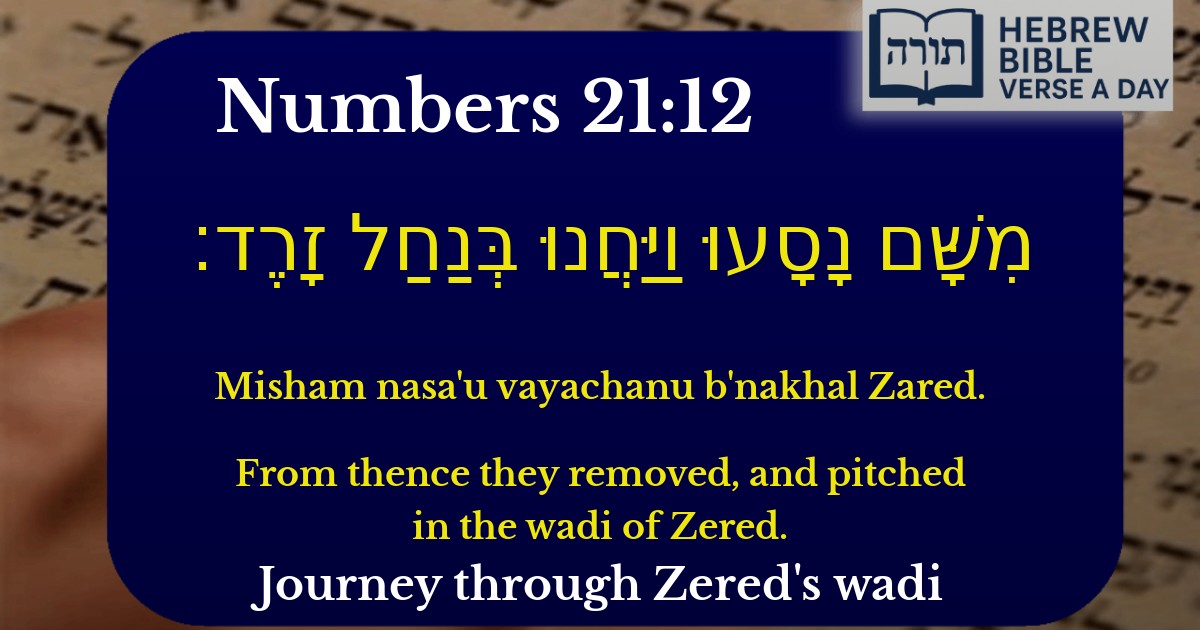Join Our Newsletter To Be Informed When New Videos Are Posted
Join the thousands of fellow Studends who rely on our videos to learn how to read the bible in Hebrew for free!
Hebrew Text
מִשָּׁם נָסָעוּ וַיַּחֲנוּ בְּנַחַל זָרֶד׃
English Translation
From thence they removed, and pitched in the wadi of Zered.
Transliteration
Misham nasa'u vayachanu b'nakhal Zared.
Hebrew Leining Text
מִשָּׁ֖ם נָסָ֑עוּ וַֽיַּחֲנ֖וּ בְּנַ֥חַל זָֽרֶד׃
Parasha Commentary
📚 Talmud Citations
This verse is not quoted in the Talmud.


Context in the Torah
The verse (Bamidbar 21:12) describes the journey of Bnei Yisrael as they traveled through the wilderness after leaving Kadesh. The "wadi of Zered" (נַחַל זָרֶד) marks one of their encampments before entering Eretz Yisrael. Rashi explains that this location is significant because it was the boundary between the lands of Edom and Moav, indicating a transition in their travels.
Geographical and Historical Significance
According to Ramban, the wadi of Zered was a natural border mentioned earlier in Devarim 2:13–14, where Hashem commanded Bnei Yisrael to cross it as part of their journey. The Talmud (Chullin 60b) notes that this wadi was known for its deep valleys, symbolizing the challenges Bnei Yisrael had to overcome before entering the Promised Land.
Spiritual Lessons
Etymology of "Zered"
Ibn Ezra connects "Zered" (זָרֶד) to the root ז-ר-ד, meaning "to flow" or "to scatter," possibly referring to the wadi’s seasonal streams. This aligns with the Malbim’s view that physical landmarks in the Torah often carry deeper metaphorical meanings—here, the transient nature of Bnei Yisrael’s wilderness experience before reaching permanence in Eretz Yisrael.